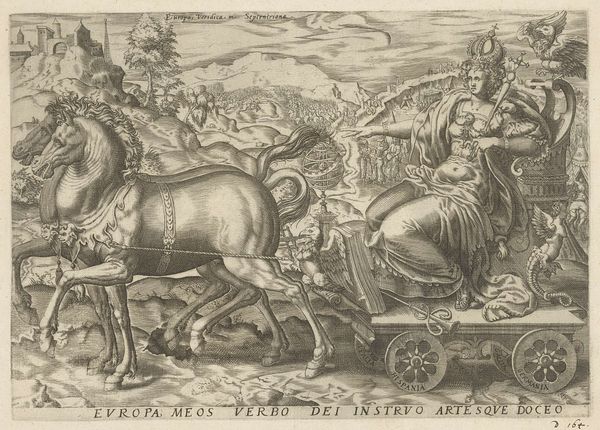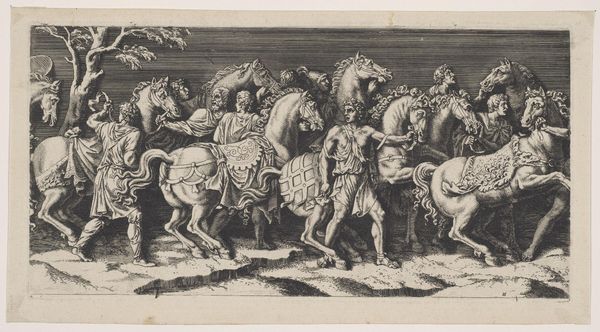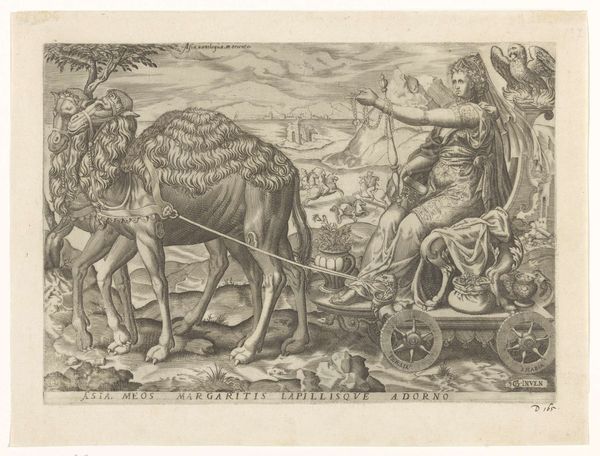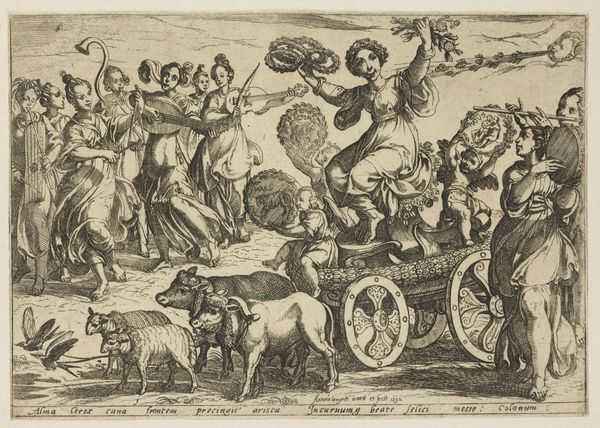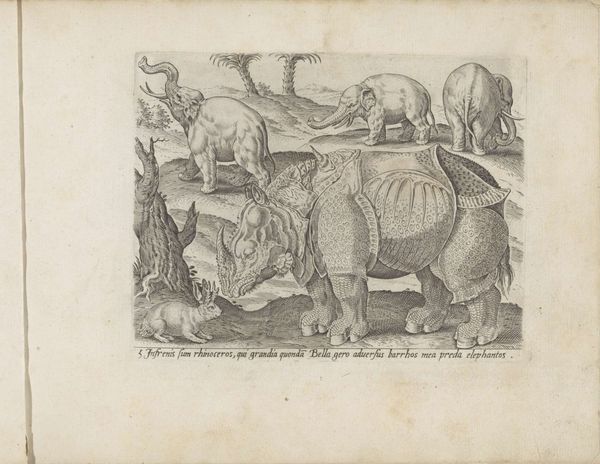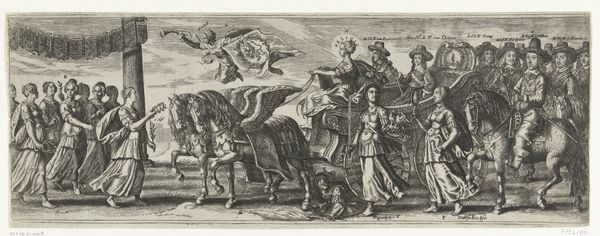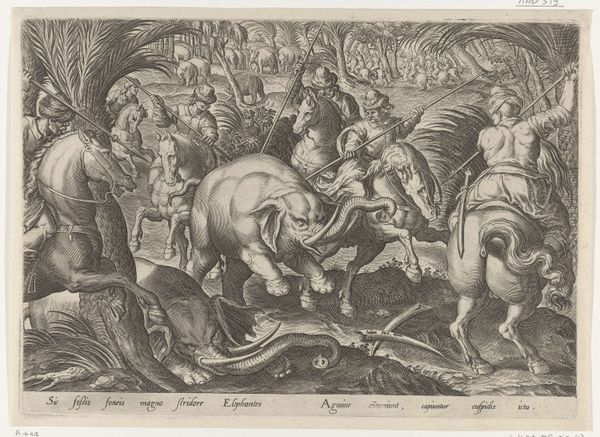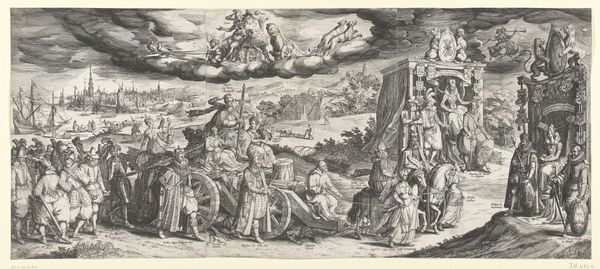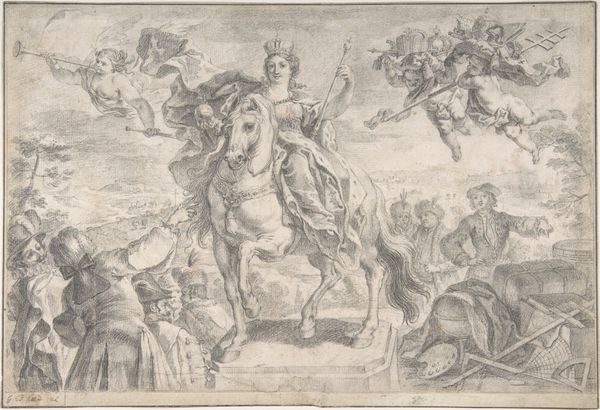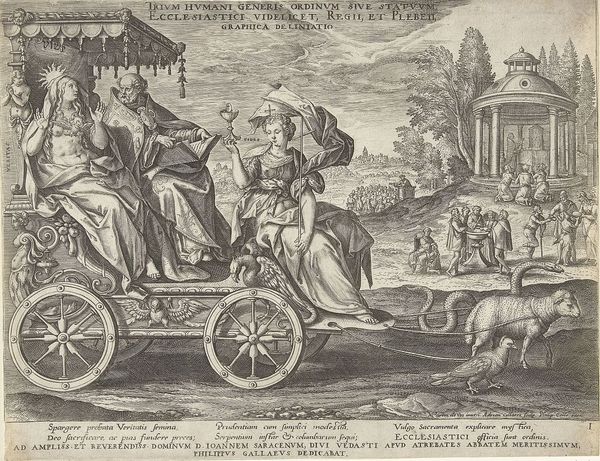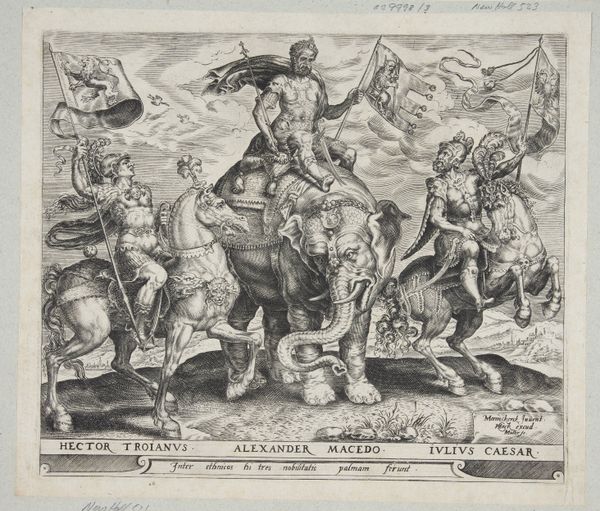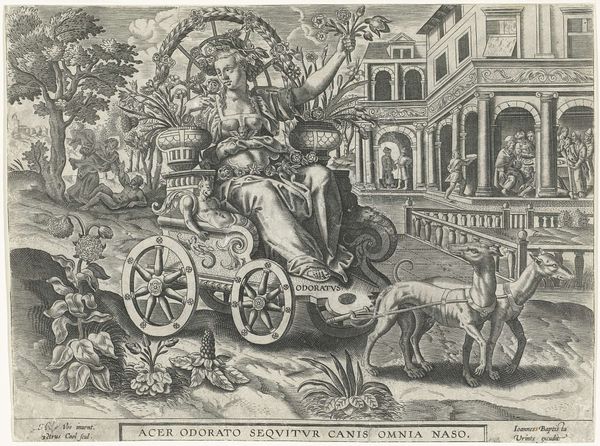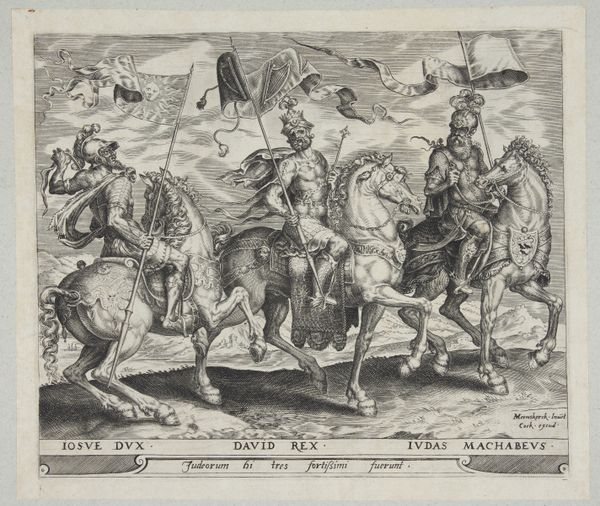
print, engraving
#
allegory
# print
#
old engraving style
#
mannerism
#
history-painting
#
engraving
Dimensions: height 227 mm, width 323 mm, height 274 mm, width 360 mm
Copyright: Rijks Museum: Open Domain
Curator: What strikes me immediately about this engraving is its sense of imperial grandeur. An elephant adorned with garlands pulls a cart laden with riches, carrying a regal female figure. It feels opulent and imposing. Editor: It’s precisely that perceived opulence that we need to unpack. This is “Afrika,” a print from around 1570, made by an anonymous artist and currently held in the Rijksmuseum’s collection. It's part of a series of allegorical representations of continents. The piece gives us a glimpse into 16th-century European perceptions and projections about Africa. Curator: Ah, allegory! So much to interpret here! The figure enthroned on the cart seems to be a personification of the continent itself. Tell me more about what she embodies. Editor: Indeed. Note the lion, a common symbol associated with Africa, acting almost as her guardian. The items around her, likely spices and perhaps minerals, allude to the continent’s perceived wealth and resources, primed for the taking. What resonates uncomfortably is that, in viewing this artwork today, we recognize the violent history of exploitation it anticipates. The gaze isn't simply celebratory; it’s possessive. Curator: Absolutely. Consider her headdress too, perhaps meant to signify some kind of African royalty, but ultimately rendered through a European lens. The inscription below, “Africa. Meis exterisque aromata suppedito,” roughly translates to "Africa provides aromas for itself and for others," further reinforcing that exploitative narrative. Editor: Right. It invites consideration about the European gaze and its impact on constructing the "other". How were these images consumed? And how did such visual rhetoric contribute to colonial ideology? Curator: Looking at this print now, through a contemporary lens, it serves as a powerful reminder to critically examine the historical underpinnings of how we perceive identity, race, and even geography. Editor: I agree. And perhaps appreciate how even seemingly celebratory symbolism can be imbued with a dark legacy when understood through a broader, more critical historical perspective.
Comments
No comments
Be the first to comment and join the conversation on the ultimate creative platform.
